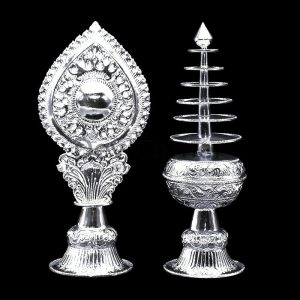Sinamu and Jwala Nhyaka in Newar mythology

Stock Photos and Videos of Nepal
Shutterstock Alamy Pond5 Dreamstime 500px
In the ancient city of Kathmandu, nestled in the Kathmandu Valley of Nepal, lies a rich tapestry of culture, tradition, and mythology. One of the most fascinating aspects of this cultural heritage is the reverence for the ancient energies of Sinamu and Jwala Nhyaka, symbols of light and power in Newar mythology.
The history of honoring these ancient energies can be traced back centuries, to a time when the Newar people first settled in the Kathmandu Valley. According to legend, Sinamu was a powerful deity who possessed the ability to illuminate the darkness and bring clarity to the minds of mortals. Jwala Nhyaka, on the other hand, was a fiery spirit who symbolized strength and vigor.
As the Newar people built their civilization in the valley, they sought to harness the power of these ancient energies to guide and protect them. Temples were erected in honor of Sinamu and Jwala Nhyaka, and rituals were performed to invoke their blessings. These rituals often involved offerings of incense, flowers, and other sacred items, as well as elaborate ceremonies and dances.
Over time, the worship of Sinamu and Jwala Nhyaka became deeply ingrained in Newar culture. The energies of these mythical beings were believed to imbue the land with fertility, prosperity, and protection. They were seen as benevolent forces that watched over the people and ensured their well-being.
As the centuries passed, the influence of Sinamu and Jwala Nhyaka spread beyond the confines of the Kathmandu Valley. Pilgrims from far and wide came to pay homage to these ancient energies, seeking their guidance and blessings. The temples dedicated to Sinamu and Jwala Nhyaka became centers of spiritual pilgrimage, drawing believers from all walks of life.
One of the most significant events in the history of honoring the ancient energies of Sinamu and Jwala Nhyaka was the Great Festival of Light, held once every ten years. During this grand celebration, the temples were adorned with thousands of oil lamps, illuminating the night sky and filling the valley with a warm, golden glow. The festival was a time of feasting, dancing, and merrymaking, as the people came together to honor the light and power of Sinamu and Jwala Nhyaka.
As the years passed, influential individuals emerged who played a pivotal role in the preservation and promotion of the ancient energies of Sinamu and Jwala Nhyaka. Among them was Devi Shrestha, a renowned priestess who dedicated her life to studying and interpreting the myths and legends surrounding these ancient deities. Devi’s teachings helped to deepen the understanding of Sinamu and Jwala Nhyaka among the Newar people, inspiring a new generation to continue the traditions of worship and reverence.
Another influential figure in the field of Newar mythology was Rajan Bajracharya, a historian and scholar who spent decades researching the ancient texts and inscriptions that referenced Sinamu and Jwala Nhyaka. Rajan’s work shed new light on the significance of these ancient energies in Newar culture, revealing their enduring relevance in a modern world.
Despite the positive impact of honoring the ancient energies of Sinamu and Jwala Nhyaka, there were also challenges and controversies that arose over the years. Some critics argued that the worship of these mythical beings was outdated and superstitious, and that the resources devoted to their veneration could be better spent on more practical pursuits.
In response to these criticisms, proponents of the ancient energies of Sinamu and Jwala Nhyaka argued that these traditions were an integral part of Newar identity and heritage. They pointed to the ways in which the worship of these deities fostered a sense of community, solidarity, and spiritual connection among the people.
Looking to the future, there are mixed perspectives on the continued relevance of honoring the ancient energies of Sinamu and Jwala Nhyaka in Newar culture. Some believe that these traditions will continue to thrive and evolve, adapting to the changing needs and circumstances of the modern world. Others worry that the pressures of globalization and urbanization may erode the traditional practices and beliefs associated with these ancient energies.
In conclusion, the ancient energies of Sinamu and Jwala Nhyaka hold a special place in the hearts and minds of the Newar people. They embody the values of light, power, and protection, and serve as a link to a rich and vibrant cultural heritage. Through the efforts of dedicated individuals like Devi Shrestha and Rajan Bajracharya, the traditions of honoring these ancient energies continue to be preserved and celebrated, ensuring that they will endure for generations to come.
DISCLAIMER: This was generated with the help of AI. This technology is new and constantly improving. Please verify the accuracy before sharing.
